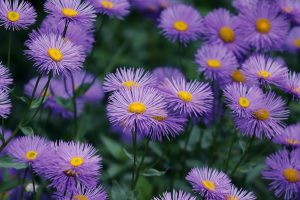There’s nothing quite like having a flower garden. A mosaic of textures, shapes, and flowers can serve as a safe haven or highlight the beauty of your home from the curb. To keep your garden beautiful and healthy, you need to know how to care for each flower. Here are some popular gardens flowers and how to tend to them:
1. Tulips
Tulips are extremely popular and come in just about every shade. The smaller tulips are perennial, which means they live for more than two years, while the bigger ones often need to be replanted every year. If you live in an area that’s pretty close all year round, you’ll want to plant tulips. When tulips are done flowering, you should keep the leaves, but cut the flower stalks.
2. Asters
Asters are pretty low maintenance and produce lavender-colored, soft-petaled flowers. You can plant them from pots in the spring, where they should get full sun and watered regularly until they stop flowering. You should be sure to avoid watering the leaves or flowers since this can cause mildew to grow. Once the blossoms die, you should pull them off (called “deadheading”) so new ones can grow.

How To Care For Popular Garden Flowers: Asters
3. Mango punch flowers
Also known as Tickseed, this perennial produces tight, orangish-red blossoms that need lots of sun, though they can stay strong if the weather gets darker. The soil should be slightly moist most of the time and clipped of dead blossoms. Bees and butterflies love these flowers, so mango punch flowers are great for attracting wildlife.
4. Daffodils
Daffodils grow in the spring and come in shades of gold, white, and red. Like many of the flowers on this list, they should be deadheaded. When they’re done blooming, you should let the plant die. Over winter, the bulbs will get ready to grow again the next year.
5. Scabiosa
Nicknamed the “pincushion flower,” the scabiosa grows in the summer and into the fall. They require a mild climate and don’t do well in overly cold, wet, or humid weather. They do like full sun and should be planted in soil enriched with compost. Once a blossom dies, it should be deadheaded.




